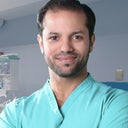Fibrosis is not a condition some people get, and some people don’t.


